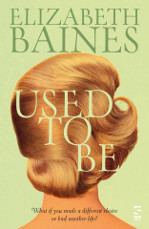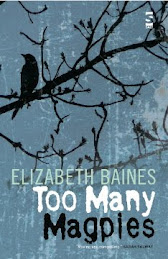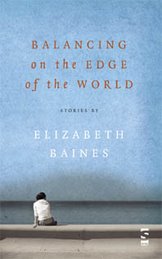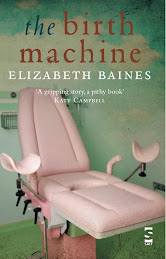Clare suggested this 2012 Booker-shortlisted novel in which a group holidaying in a villa near Nice (poet and philanderer Joe Jacobs, his war correspondent wife Isabel, their fourteen-year-old daughter Nina and their two friends Laura and Mitchell) is disrupted by the unexpected arrival of a stranger, come to seek out Joe whose poems she is obsessed with, the mysterious and unbalanced twenty-three-year-old Kitty Finch, a fey-seeming (but devastatingly disruptive) creature with long red hair and green-painted fingernails, appearing first swimming naked in their pool.
However, we know before the narration of this moment that Kitty and Joe end up having sex, as the opening section has them driving back together from the hotel where they have done so, a scene that will keep recurring through the book, and which is steeped in an air of loss and doom.
The book is strikingly imagistic, and we were all agreed that it created rich pictures in the mind of the reader, but in her introduction Clare said that she felt at too much of a distance from the characters, and there was something about the imagery and the very conscious patterning of symbols that seemed somehow superficial and left her cold, and most people agreed.
Symbols recur throughout the text: when Kitty is first sighted in the water she is seen as a body - a prefiguring of death or tragedy that then hangs over the book - and Joe jokingly asks if it's a bear, a point that is laboured in dialogue between the characters and a symbol that will recur at the devastating end of the book. John pointed out the recurring image of hairballs - someone choking on one, hair getting caught in the pool filter system - and there are frequent references to mice including sugar mice which appear twice in an unsettling chronology for the reader, first in a dream of Nina's (which she doesn't communicate to anyone else) and then in a later incident when Joe and Kitty are walking away from the hotel and Kitty buys one. There's also frequent flagging of the antique guns that Mitchell, a trader in such artefacts, has bought, and of his love of guns and shooting. John pointed out the symbolism of Kitty Finch's name, the cat and bird references indicating a woman both at war with herself and of ambiguous significance to the others.
Thus while the novel is predicated on a familiar setup of the realist novel of middle-class mores and also displays some of the characteristics of the whodunnit, it is yet a novel with a strong and intricate symbolic system that draws attention to itself in a non-realist, and indeed postmodern way.
Although everyone in our group enjoyed reading the book, no one found the combination satisfactory. One chief complaint was that, as Clare had indicated, it was impossible to like or care about the characters, since they are very much viewed from outside, and their motives are, for the most part, unclear. John noted that the characters are placed, puppet-like, in scenes like tableaux - the family by the pool, the family around the dinner table, Kitty and Joe in the orchard, various couples on the beach, retired doctor Madeleine watching them all from her balcony etc - and I said that since there was a gun placed at various moments, including under a bed, it also had echoes of the game of Cluedo, which I take to be deliberate. Trevor (without knowing that Levy had been a playwright), said he thought the novel was thus really a play. I wasn't sure that it was that simple, since the concerns of most plays (realist ones anyway) are indeed motivation, character and dialogue - all things that this novel eschews (much of the dialogue seeming non-realistic, and to many in our group unconvincing). I pointed out that a postmodern novel is intended precisely to disrupt and disturb and even alienate the reader, rather than to reassure and immerse, and that the concern of this novel is the fluidity of personality and identity (eg the sugar mice of Nina's undisclosed dream entering the real-life experience of Kitty and Joe, Kitty's ability to challenge and break down Joe's carefully-honed middle-class-English persona and to bring to the fore his searing past as a child refugee who had been hidden in the woods from the Nazis, and her conviction that the child Joe had entered her mind). People readily accepted this as a principle, but they didn't think it worked here.
Some suggested that the problem was that the middle-class-realist novel setup of a moneyed family taken from their normal environment and thus vulnerable to disruption, led you into a realist reading which then in turn left you dissatisfied with the postmodern elements. The discussion showed that people were indeed wedded to a realist reading of the book, as there was much pondering of the characters' motives and a huge argument over what had really happened in the tragic moment towards the end, with people indeed wanting the clear-cut explanation you get with a murder mystery. The notion that we were not meant to know exactly what happened, that it was indeed muddled, seemed not have occurred to anyone, nor was acceptable to them. There were also objections to elements that are unconvincing on a social-realist level: what poet can live on his royalties as Joe does? and how was Mitchell supposed to get the guns he had bought there out of the country? Do pebbles really get holes worn in them in the mildly lapping Mediterranean? And why isn't Kitty's background filled in when she's such a disruptive force?
I felt that the middle-class-novel paradigm had been deliberately set up to be subverted: Joe's urbane middle-class Englishman's veneer masks a tragic past and ongoing emotional damage, Mitchell's gourmet interests and impulse to hire an expensive car hide the fact that he's about to go bankrupt, and the whole apparently concrete and vivid middle-class setup is haunted by an existential uncertainty. I wondered if the problem was the imagery itself, and the way it's employed. Having had my attention drawn so acutely to the symbolism (Ann said you almost thought of charting it all out on a spreadsheet), I personally felt the need both to understand its meanings on an intellectual level as well as to be influenced by it emotionally, but as Clare had indicated in her introduction, I often did neither, and often what an image brought to my attention to was not the themes and ideas so much as an author creating an artefact.
Why, for instance, the bear image, (rather than that of any other wild and dangerous animal)? In fact, it seems an inappropriate image: one has to stretch one's mind to imagine how a very thin girl swimming naked looks like a dead bear, in spite of her long red hair (not to mention the fact that bears aren't endemic to the countryside around Nice), and the association does not in fact spring organically from the scene, but stems from Joseph's head. It is explained that the previous day an article had appeared in the newspaper about a bear stumbling into a Los Angeles garden and swimming in the pool, and that Joe had wondered then whether the tranquillised bear had found its way home (so he has bears on his mind). This plants the central theme of exile and home, but by being located in the consciousness of a man whose consciousness is largely shrouded, the image is essentially divorced from the scene. This may be deliberate - Levy may be making a point about consciousness - but the effect for me is to give the image an academic quality, which in turn made me think of the author imposing it on her text, and ultimately gave me a sense of artificiality and interfered with my engagement with the book. I felt the same about much of the rest of the imagery. I still don't know, having thought about the book, what the sugar mice signify specifically, and although I could perhaps work it out intellectually if I thought about it further, the point is that in the process of reading it didn't impress anything on me emotionally apart from bafflement. At one point, caught fish are described, in Joe's consciousness, as having failed to 'swim home' and although this metaphor is potentially more organic (we know by now about Joe's background of exile and emotional damage), the over-exact verbal echoing of the title of the book seems forced and draws one's attention to the author and her manipulations rather than to any world of meaning she is creating.
The overall viewpoint appears omniscient in that for much of the time the characters are seen from outside, viewpoints are constantly shifted - in the introductory scene by the pool from paragraph to paragraph - and the whole thing has a watching, observational air. However, this seemingly external viewpoint is only partial: we don't know everything about the characters' thoughts, and we often share the characters' lack of understanding of each other and their motives. John suggested, rightly, I think, that the overall viewpoint is intended to be that of Nina, at the time a bystander to the adult dramas yet affected by them, looking back and trying to piece it all together from the standpoint of the very final section.
This final section is strikingly different from the rest of the book. Narrated in the first person by Nina several years later, it lacks the glittering imagistic quality of the rest of the book, but throbs with a rhythm and felt emotion seemingly withheld until this moment. While everything up to this point has seemed to happen indeed through the vivid and glittering distortions of water, this last section feels utterly real. It's a hymn of grief (restrained but all the more affecting for being so) that brings retrospectively into shocking focus the importance and significance of the tragedy underlying that past summer's events. It had me in floods of tears, but when I pointed all this out to the group they looked rather blank, and if they had already found it noteworthy that the section was tonally and narratorially different, they gave no indication, in which case the author's strategy hadn't worked on them. As for me, although I'm aware of the possibility that that last section depends to some extent for such an effect on the very contrast, I can't help wishing that the rest of the book had been more like it.
Doug, who didn't make the meeting, sent a note to say that he had found the setup and characters cliched a la Miss Marple, but that he had in fact very much enjoyed the imagery, found that there was some tension generated, and that the book 'cantered towards the denouement with the gusto of a frisky pony. What's not to like?'
Our archive discussions can be found here and a list of the books we have discussed, with links to the discussions, here.
Subscribe to:
Post Comments (Atom)












1 comment:
I was fascinated by the theme of what was unspoken. And think we are led to try to unravel the murder scene at the end like a postmodern whodunnit, to ask not must who was responsible but also how he died, if he did even die immediately. And suspect more than one culprit. The author has hidden clues and motives, literary and miss marple style. Conjoining every murder technique into one unlikely, impossible but apparent suicide. Did you notice the pen Kitty steals from Joe seems to have been used to write the 'suicide' note to Nina e Katerina, the hemlock and stomach pump, the stolen gun, thé spinal injury, the hemlock and dizziness, the weight of the bear like body and likely accomplice to shift it, thé stones' and gun's origin, the impossibility of shooting yourself in back while drowning etc. Throughout, the poem as threat, and how the oblique, unspoken, self indulgently morbid creative impulse can morph into a form of violence against others?
Post a Comment